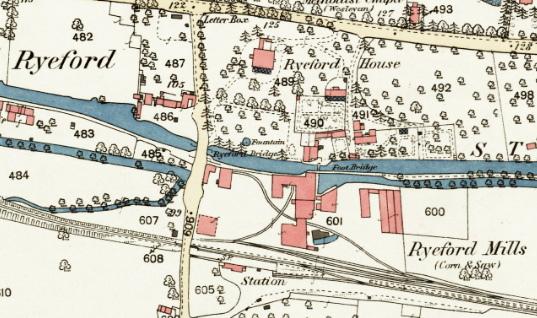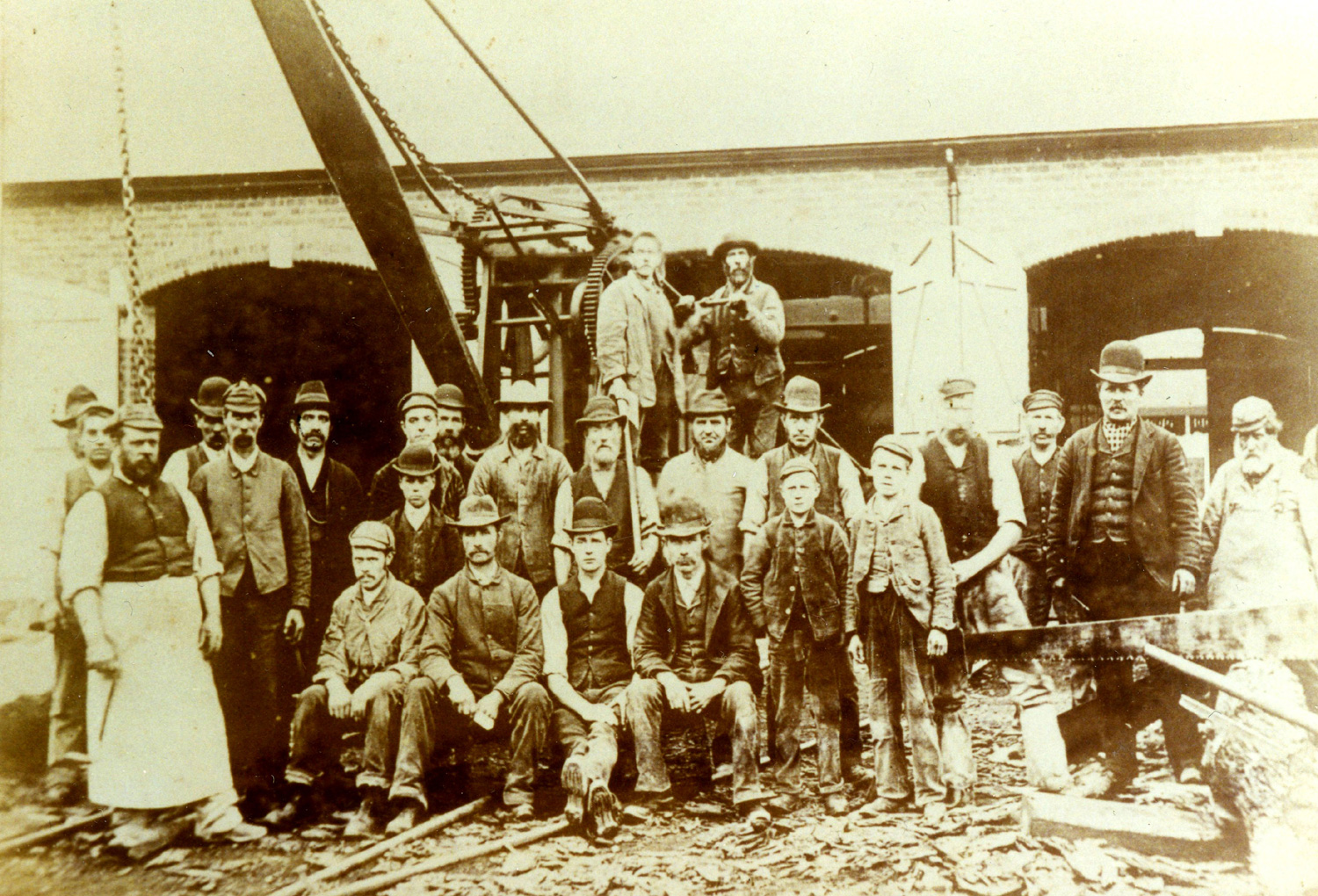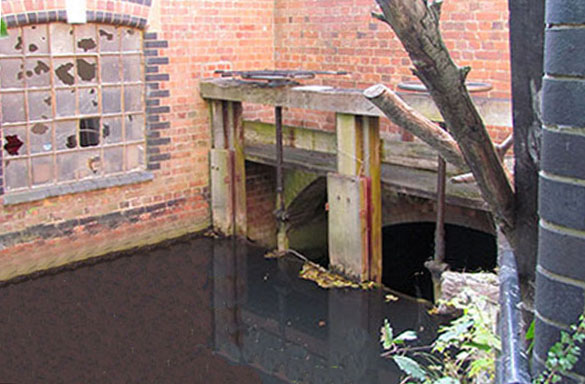The canal passes between the site of Ryeford Mill and the former mill owner's house to the north. (For sources, see end of page.)


Formerly making woollen cloth, the mill was converted to flour milling following the Repeal of the Corn Laws in 1846 which allowed foreign grain to be imported with little duty.
George Ford and his brothers made improvements in the 1850s, including widening the canal and creating a wharf where barges could unload, now known as Ford's Wharf. When the Stonehouse & Nailsworth railway came by in the 1860s, they arranged for sidings to serve all parts of the mill yard.
The brothers had other businesses going on at the same time, and their vigorous approach to trading made them a lot of money, but it also caused trouble within the partnership. After negotiations between the brothers failed, a High Court action led to the partnership being disolved in 1878 and the glory days were over.


After the Ford Brothers' business collapsed, the mill was sold in 1885 to Messrs Webb & Spring who were also running Ebley Saw Mills. In the picture, the workers are posed in front of the mill building that still exists.
Webb & Spring were doing good business cutting up home-grown trees to produce planks and other shapes. This was also good for trade on the canal, as trees were brought by boat from far afield, and the converted timber provided a welcome outward cargo for boats going to the Midlands to collect coal.
In the twentieth century, the mill became well known for producing elm boards for coffins, but now the area is a trading estate.


Ryeford Lodge has a fine 18th century west front on an earlier structure, and it evidently served as the mill owner's house. When the canal was built between the house and the mill, the Stroudwater Company was obliged to provide a footbridge to link the two.
The occupants of the house had a big surpise in Febrary 1870 when a six-story warehouse in the mill yard opposite suddenly collapsed with a terrific crash. Much of the debris fell into the canal, and this drove the water against the house with such force as to break a number of windows.
The present bridge, preserving the appearance of the original, was installed by Canal Trust volunteers in 1984.


Sluices that once controlled the inlet to the mill's water-wheel have in recent years helped to provide a feed to the canal. In the 1950s, the canal above Ebley was converted into a second river channel to ease flooding around Lodgemeore and Dudbridge. As this drastically reduced the flow of water to the lower part of the canal, a new feed was required to continue suppying water to Hoffmann's ball-bearing factory at Stonehouse.
Two pipes were installed in the bank between the river and the canal, and the sluices now maintain the river at the level needed to feed the canal. If the flow in the river gets so high as to risk flooding, the sluices can be accessed via the locked door on the towpath, and their level can be lowered to send more water down the river channel.
For Ford's Wharf, see D1180/1/5 p168-225.
For dissolution of Ford Brothers partnership, see London Gazette 31 Jan 1879.
For 1885 sale of Ryeford Mills estate, see GA RR289.12GS.
For collapse of warehouse, see Stroud Journal 12 Feb 1870.
For installation of replacement footbridge, see Trow Archive June 1984.